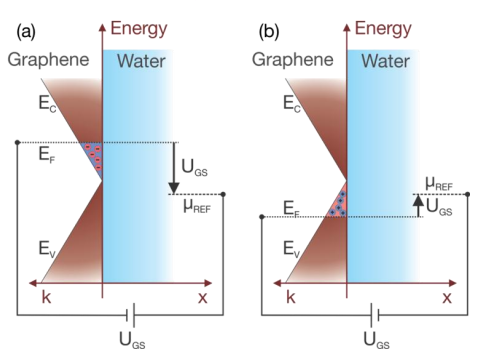Graphene And The EmergingTechnology of Neural Prostheses
Neural implants are set to be revolutionised by a new type of graphene transistor with a liquid gate, say bio-engineers
The emerging technology of neural prostheses has the power to change what it means to be human. The ability to implant electrodes into the eyes ears, spine or even the brain has the potential to overcome degenerative disease, mend broken bodies and even enhance our senses with superhuman abilities.
But despite numerous trials of electronic devices implanted into the human body, there are still many challenges ahead. The problem is that most of these devices are based on silicon substrates which are hard, rigid and sharp. Those are not normally qualities that sit well with soft tissue.
Consequently, any small movement of these devices can damage nearby tissue and in the worst cases, form scar tissue. What’s more, the hot, wet and salty environment inside the body can damage electronic components, limiting their lifespan.
This story is only available to subscribers.
Don’t settle for half the story.
Get paywall-free access to technology news for the here and now.
Subscribe now
Already a subscriber?
Sign in
You’ve read all your free stories.
MIT Technology Review provides an
intelligent and independent filter for the
flood of information about technology.
Subscribe now
Already a subscriber?
Sign in
What’s needed, of course, is a flexible substrate that is also biocompatible with human tissue. Now Lucas Hess and pals at the Technische Universität München in Germany say they’ve found the ideal material–graphene. Today, they outline their plans for graphene-based neural prostheses and the experiments they’ve already done to test its biocompatibility.
Graphene is ideal because carbon “chicken wire” is only a single atom thick and therefore highly flexible. It is also held together by carbon bonds, which are among the most stable known to chemists. That means it should be relatively stable inside the human body.
But graphene has another advantage. Hess and pals have shown how it is possible to use it to make transistors that are gated by the solution in which the transistor sits. In other words, the natural body fluids that surround these prostheses will form an integral part of their operation.
So-called solution-gated transistors are much more sensitive to electronic changes in their environment than conventional silicon devices. “[Graphene-based] devices…far outperform current technologies in terms of their gate sensitivity,” say Hess and co.
These guys have begun to test graphene interfaces with various cells such as retinal ganglion cells, reporting that graphene has excellent biocompatibility.
Of course, working graphene-based neural prostheses are some way in the future. But Europe recently announced an investment of €1 billion in graphene research over the next ten years. If that doesn’t buy some significant progress in this area, nothing will.
Ref: arxiv.org/abs/1302.1418: Graphene Transistors For Bioelectronics
